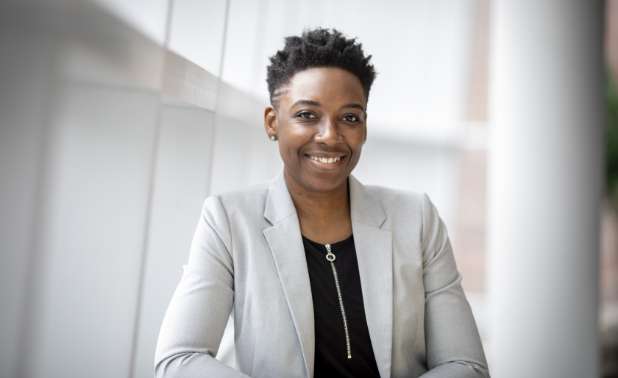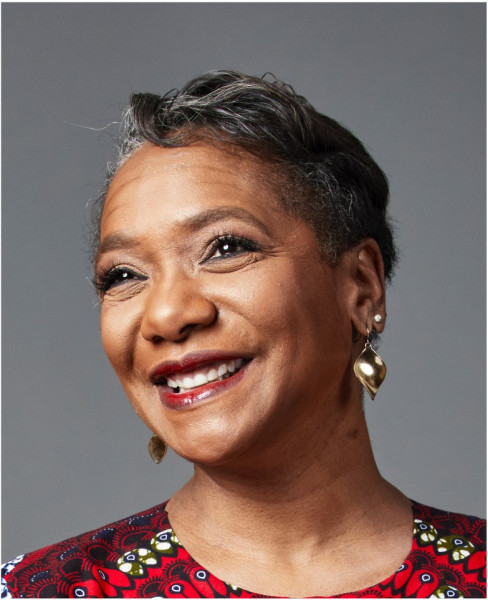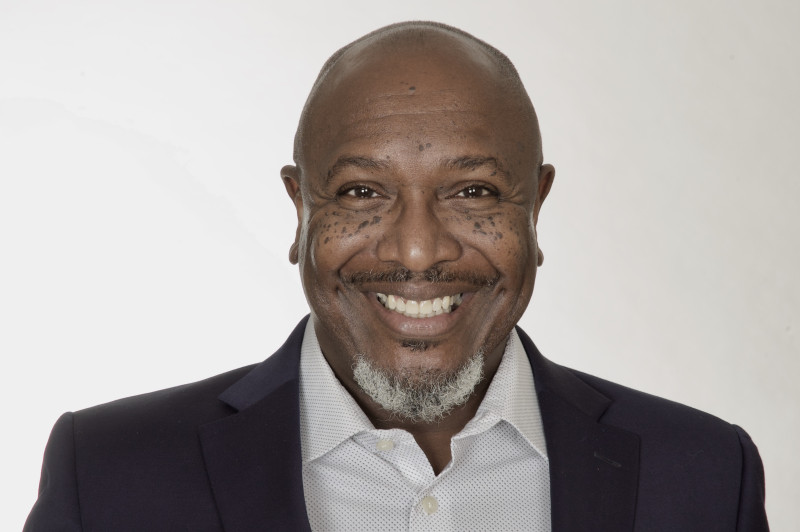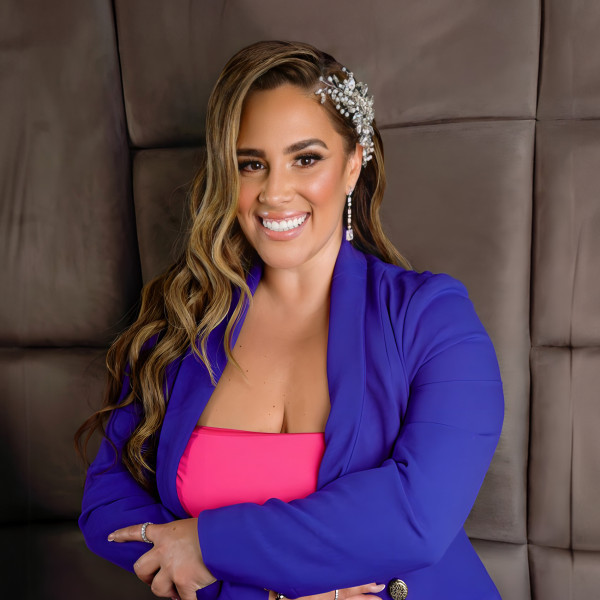Kamela Forbes:
Welcome back to another episode of But First, People, a podcast that dives deep into the incredible diversity and innovation of today's working world. I'm your host, Kamala Forbes, and today we have an extraordinary guest, someone who's a trailblazer in every sense of the word, Janet M. Stovall. Janet serves as the Global Head of Diversity, Equity, and Inclusion at the NeuroLeadership Institute where she guides their DEI research agenda, communications, leadership practices, and development of scalable learning solutions. She's also the founder of Pragmatic Diversity, a consultancy focused on dismantling systemic inequalities, particularly those tied to race. And with her diverse career background, she excelled at driving transformative change within intricate large-scale organizations. She's broken glass ceilings within the corporate landscape being one of the first and, for a long time, the only Black C-level speech writers in the Fortune 100. And that's just the tip of the iceberg. Her TED Talks have amassed over 2.5 million views and serve as a catalyst for businesses to improve their inclusivity efforts. Not only that, she stands as the co-author of the Amazon bestseller, The Conscious Communicator: The Fine Art of Not Saying Stupid S-H-I-T. In this episode, we'll dive deep into how leaders can create actionable DE&I frameworks and discuss what companies can do to minimize risk in order to future proof your DEI programs. I hope you listeners are ready because it's going to be an insightful journey ahead. Janet, welcome to the show.
One of the things we like to do on these podcasts, Janet, is to welcome our guests by having them sing a song for us. It's part of our culture here at Pride every Monday morning, we have all hands meeting and we have all of our new employees sing in front of the entire company, and it's just a way to almost welcome you to the family. So, in that same vein, we'd like to welcome you to the podcast and ask you what song are you going to sing for us today?
Janet:
Okay. Now, you know when we first talked about this, I was nutsy about it and I thought about it and I realized that when I first met you, the conversation we had was, you should always bring your authentic self, I am authentically not a singer, but what I am authentically is a speaker. So, I did choose a song, but I am going to try to speak it in dulcet tones because that would be much better, and you can understand it. Okay.
Kamela:
There you go.
Janet:
And I had to promise that when I looked at these lyrics too, I realized there's one line in there that I absolutely just cannot say, I sang it wrong, I've been singing it wrong all along. And when I saw it, I'm like, oh, no, we won't say that. So, we're going to start a little bit past the song, but the song is called “It's a Good Day to Fight the System,” and the artist is Shungudzo. Okay?
Kamela:
Okay.
Janet:
And so I'm going to start in the middle. “My head is on straight. My heart is in peace. My soul is incredibly ready to change history. It's a good day to fight the system, to fight the system. It's a good, good, good day, a good, good, good day. We're never going to stop. We're going to make it count. When one of us is tired out, the other one will hold them down. We're going to spread the love, we're going to spread it round. We're all over the city now and way down in the underground, because it's a good day to fight the system, to fight the system. It's a good, good, good day. Yes, a good, good, good day. It's a good day to fight the system.”
Kamela:
Ooh, Janet, I might be loving that a bit. It's the first time we've had that spoken word on the podcast as the intro. So, kudos to you on that and kudos to you for bringing your authentic self. I know as DEI practitioners, that's what we say every day and we tell people to do it all the time. So, I love to see it in practice here.
Janet:
Thank you for letting me do it.
Kamela:
Yes. And as it is a good day to fight the system, that leads me right into my next question. You've been doing this work and fighting the system and helping businesses dismantle systemic inequities, driving change, building inclusive cultures, and challenging businesses to get serious about inclusion. What is your why? What keeps you connected to fighting the system?
Janet:
My why for all of this work is because. Because inequity exists and it shouldn't, because that inequity can and does and will limit what my daughters can do in the world, and it shouldn't. And so, that's my basic “why” - because of inequity. Now, my why as to why I do this work in the space that I do, which is the corporate space, is because I believe that business is uniquely positioned to dismantle systemic racism and systemic inequity in general. I believe business can do that like no other entity can. So that's my why in this space.
Kamela:
Well, that's great, and like you say, you're connected to that why for you personally to keep your drive, but I know you always say that it's so important for not only one to be connected to their why personally, but the same concept applies to businesses in terms of organizations needing to be connected to their why, understanding why they want to be doing diversity and inclusion work. Can you speak a little bit more to why they need to be connected to their why?
Janet:
Absolutely. I start every consulting engagement that I do with the Neuro Leadership Institute with two questions. The first question is, why are you doing DEI in the first place? Now, since I'm usually talking to the diversity leader, the answers that I get most of the time are things like it's the right thing to do, or because we want to create a space of belonging where everyone can bring their authentic selves as we started off. My second question is, why is your boss doing DEI? And then I wait, because usually there's a dead silence. The truth is that even if the diversity leader has had that conversation with his or her boss, which is either going to be probably the CEO or CHRO, even if they've had that conversation, they may not really know what the real answer is either because their boss didn't give it to them and just parroted what they heard, or they heard it and didn't really know what to do with it. But if they don't know that, if they don't know the organization's why, the person that they are reporting to, the person who is going to make the decision for the organization, if they don't know their why, then they don't know their why for diversity at all. And if you don't know your why, you can never get to your how. And the DEI person is generally focused on the reasons for DEI's why, and that's not going to work always with the people who have to make the decisions about the organization.
Kamela:
I love that, that key takeaway right there. If you don't know your why, you can never get to your how. That's super important.
Janet:
And let me add something to that. When you and I were talking and building this out and discussing it before I mentioned that one of the things that we do to help people understand their why at this very early stage is a motivation model. Now, a lot of consulting firms have built maturity models, and we actually started off down that path too. And my point was, every organization is different. Every organization is going to have a different why. So, who are we as an organization to decide what the ideal DEI ecosystem is, the ideal stage of maturity? But what we can do is we can talk to an organization about why they're motivated to do it in the first place, what their motivation is. So instead of maturity model, we built a motivation model. And that motivation model basically gives you four things, four whys, it asks you, which why are you?
And the four are compliance, which is basically DEI so we don't get sued. Competition, which is DEI so prospective customers and employees will choose us over somebody else. Culture, which is DEI so the people that choose us stick with us. And then there's commerce, which is DEI, so we do one or all of the only three things that any organization exists to do, which is make money, save money, achieve a vision. When we talk to organizations now, we get them in to figure out: Where are you right now? And if you are where you want to be, if your motivation is one of these and you're okay with that space, stay there. We will help you do the best you can do in that space. We'll help you be the best you can be. But if you as an organization want to be somewhere different, let's say you want to move beyond compliance to culture or competition or even to commerce, then you're going to have to have a roadmap to get there. And you have to understand that the people who are making the decisions at the very top, their motivation's going to drive what happens with DEI in the organization. No matter how passionate you are as a practitioner, if the people above you don't have the same motivation, it won't get done. So, the trick is understanding what their motivation is, having them see it, and then having them help you decide where it is, they as an organizational are willing to go.
Kamela:
So Janet, even armed with this knowledge of your why, you understand what your CHRO or CEO, why they are doing the DEI work. There's no secret that DEI is still at risk these days. So, let's talk about the elephant in the room. In a landmark decision, the US Supreme Court ruled to ban the consideration of race in college admissions, effectively ending affirmative action policies aimed at increasing minority enrollment. Now this has led to stalled budgets, program cuts, and rising uncertainty in workplace DEI efforts. Can you outline what the ruling actually said and what it didn't say and what implications that has for corporate America?
Janet:
The SCOTUS decision for affirmative action in higher education is concerning in a general, is this what we're going to do really? Are we doing this again way? But honestly, it doesn't affect workplace diversity right now. And we know that, and I honestly don't believe it's going to do much going forward because what they do in higher education in terms of racial balancing is not what we do in corporate America. Haven't done it in a while. Affirmative action in corporate America is very different. In higher ed., they can look at race and they have something called a plus factor. Your race can move you forward in the queue for a position to be admitted. You don't do that in the workplace. Affirmative action that way has not been in the workplace really ever. When the Civil Rights Act was passed in ‘64, there was no clause for racial quotas that was never there.
And then back in the late seventies, the Bakke v. University of California decision outlawed quotas in higher ed. So, they weren't really even there. And people equate sometimes DEI targets with quotas and they're not the same thing. The big difference is that plus factor. So, the quotas have been gone, they've been made illegal for years. Nobody does it. And over time, courts and government agencies clarified that it's okay to have plans to help people who face past discrimination, but you can't have a racial quota anyway. Employers cannot use fixed numbers based on race. But what they can do is they can still take steps to make workplaces more fair and more diverse. The key point here is that this backlash that was happening was happening before SCOTUS. This is just the latest in a series of events that have been going on for a while.
Kamela:
All right. And the interesting thing is that this SCOTUS decision has different outcome from different leaders. The CEO is afraid of backlash. The CHRO is concerned with compliance. The CDOs are concerned with sustainability. So, can you talk a little bit more about the effects across all of the C-suite and then we'll dive into maybe how you could respond to each of their concerns?
Janet:
Sure. You summed it up very well, actually. The CEOs are facing an external pressure from the go woke, go broke movement, and they're afraid that it's going to affect their bottom line. So, the question that they're struggling with is how do we achieve our business goals despite these conflicting stakeholders, DEI demands, both from external forces that are saying you shouldn't be woke, internal forces that are saying, we want you to be engaged. What it's doing for CEOs is giving them a whole lot of cognitive overload because they don't often know what the threat is. They're not really sure. And understand that CEOs are human beings, so the same threats that are affecting their bottom line can be affecting them personally. They can have a personal feeling about the way these things are happening, these culture wars. They can feel that and they don't know a lot of times whether the threat that they're feeling from the DEI realm is an entrenched threat like systemic inequity or an episodic threat like it was with the murder of George Floyd.
What do you respond to? And you don't really put your finger on it, you don't know what's going on. So, you just in general, state of threat. The reality is the fear that the CEOs are feeling right now about this backlash, the stay woke, go broke is completely unfounded. The public is not buying this anti-woke stuff, not really. There was a new survey that came out recently from Weber Shandwick, and it said that 65% of employees believe that companies still have a responsibility to speak up, even if it's a controversial or sensitive issue. And the majority of employees expect organizations and CEOs to stand up on social issues like human rights, climate change, racism, gun violence. They still expect it. And even though you have the Bud Light example where they got run out of business because of the cultural backlash, a lot of other companies that have been targeted by the stop woke movement are doing just fine.
Keurig is up 5%. United Airlines made $843 million in profits, Amazon, Kellogg's, Nike's, the NFL, they are all staying woke and they're doing better than ever. So, it's an unfounded fear, but it's understandable why they would have it. That's on CEOs.
Now, if we turn to the CHRO, the CHRO's problem is with the SCOTUS decision, especially in the fear that it might come into corporate America, what does this do for affirmative action? Even though CHROs know that affirmative action that way is not an issue, the fear is once again, that the backlash will cause other issues that somebody else, either their stakeholders or the CEO will be afraid of what's going to happen and say, we can't be woke, can't be doing this. We can't have these targets, and we get targets mixed up with quotas and it just becomes a mess. But at the end of the day, CHROs at this point still have some rules that they have to comply with. There's still Title VII that they have to comply with, which basically says you can't discriminate on the basis of race. And then there are other things, other rules and regulations out there that give you the ability to correct for historic discrimination. So, they can still do that, but at the end of the day, the best thing for CHROs who look at doing is how do we keep the diversity that we have? How do we maintain that? So, for a lot of them, the turn is doubling down on some of the ways that they can easily and safely recruit for diversity without actually having racial quotas and numbers and trying to fix the organization and make it a place that people want to stay. So, in that case, you're looking for psychological safety. You're looking for getting bias out of systems so that the people that you have, the diversity that you have is able to perform as it should. People are getting promoted as they should. So CHROs, their response should be, let's fix the organization to make sure that we don't discriminate even if we end up a a point where we cannot recruit the way we want. And at this point, that's not the issue, but should it come that way you want to protect what you have, and you want to find a different way to get at diversity. And we can talk a little bit more about that. So, we go deeper.
But then the CDO. The CDO's problem is all these people are freaking out, and I might know some things that they don't know, and I can say it over and over again, but this whole environment is making people crazy. As I mentioned earlier, the truth of the matter is this did not start yesterday. This has been going on. DEI is a cyclical process. Every step of progress has a backlash. So, the truth of the matter is, is that when everybody jumped on the DEI bandwagon in 2020, by the end of 2020 or the beginning of 2021, most companies or a lot of companies were taking back what they said. They were backtracking on what they promised because either they didn't really mean it, was performative, they really did mean it, but they didn't understand how hard this is and you don't fix this overnight, or now when the economy changed, it wasn't important. They just deprioritized it. So, this movement for CDOs has been going on for a minute. They're not surprised. It's just that the SCOTUS thing is really scary to a lot of other people in a big way, and it was a big splash. And so, they're getting even more pressure. So, organizations are saying, let's cut, let's cut, let's cut. We don't want to do this. And CDOs are faced with that. For them, I think the solution is they've got to think about how they talk about DEI. They've got to get to the point where they are situating DEI, not as a moral right, but as a true business good, a business add, a business value. That's what they've got to do. And it's about making a new business case for DEI. And the way I like to think about the business case is that the business case has gotten a bad rep at some point because there is an argument that the business case for DEI treats people as commodities, and I won't disagree with that with business case 1.0, because business case 1.0, which is in the nineties or so, the late eighties, early nineties, was about saying that if you increase diversity, you increased organizational success. 2010s or so, we come in with a moral case, which is if you expand diversity, you can fix historical wrongs. We're in 2020s now and the moral case is getting a huge backlash, and the moral case will always get a huge backlash because there are people who don't agree with it. It's time for business case 2.0, which says, leveraging diversity is what improves outcomes. We have got to move from bodies in the building, to brains in the business.
Kamela:
I like that. I like that. Okay, so then let's get a little more granular here. CDOs wanting to know what they can do so that they don't have to entirely unplug their DEI initiatives. What are some activities that are still "safe" and more risk adverse that they could continue doing to make sure that they focus on that inclusion and belonging to protect the talent that they do have?
Janet:
Kenji Yoshino and David Glasgow who are co-directors of NYU School of Law did an article recently in Harvard Business Review, and they divided, they categorized DEI programs into three categories that they think are the ones that will survive. De-biasing work, which is about taking the preference out of decisions. And as much as I don't like this word, but the SCOTUS decision was colorblindness, that's essentially colorblindness. Ambient work, which is about advancing diversity in other ways across the organization. That could mean, as I mentioned what CHROs are doing, which is going out to, for example, minority serving organizations or institutions to expand your diversity just across the organization, period, without using specifically race. And then there's universal work, which basically is the argument that some bias work lifts all boats, rising tide lifts all boats. That's like things like allyship.
NLI and the way I think about it is programs, DEI programs have to have a degree of objectivity. So, I mentioned the business case 2.0, I believe that is how we can start making the argument to keep DEI in place and to make it a little bit more bulletproof than where it is now. It's about tying it to business outcomes as a valuable business asset. You don't get rid of assets. Assets don't come and go. You keep those. You resource those, you invest in those, you find ways to get more of those. If DEI were really viewed that way, then we wouldn't be having these discussions every time some social movement comes in and causes a backlash, it would be entrenched. Diversity, equity, and inclusion in the business space has to be about changing behavior, not hearts, not minds. And that sounds a little calloused, but at the end of the day, that's all you can do in the business space. And if you change behavior the right way, if DEI becomes a catalyst to change behavior so that business outcomes are better, the behavior changes and business then does what I believe it can do. It is the only place where people are forced to work together with people they may not ever work with otherwise. And their behavior's being questioned and changed. I do believe that changes society, but it has to happen there and it has to happen for reasons that make sense in business, which is going to be the bottom line. So, the solutions I think that are going to survive are the ones that de-bias. So, they take the preference out of decisions, they change the organization in general. They change everything for everybody, but they do it at work. At work. They don't pretend to be doing it outside of that space. And I believe that if we do that, that's one place we can do it. I believe it will change the world.
Kamela:
Wow. Well, important distinction there about changing behaviors, it's about creating those habits. That action piece is what it's going to take to actually move the needle on diversity. But now that we have that clarity, let's talk about what we can anticipate. If that ruling expands, what would you think that we should expect?
Janet:
If the ruling were to expand into the workplace, and again, I don't think that it will anytime soon, if ever. It's going to have a global effect, it's going to decrease... well, I'll put it this way. Even if it doesn't expand, when universities become less diverse, the talent pool becomes less diverse. When the talent pool becomes less diverse, the employee base becomes less diverse, the entire workplace becomes less diverse. So that's the effect it's going to have very quickly, I believe, even if it never crosses over into the workplace. And that's pretty significant. We've got to expect that there will be less diversity. We've got to expect that it's going to be harder for organizations that care about diversity to actually get that diversity just because the pool will be smaller. That means they're going to have to get smarter and there're going to be more companies fighting for fewer people. They're all fighting for the same people. The pool is smaller.
But remember, this has been going on for a while and it is cyclical. It happens all the time. So something I believe will happen within the organizations that want to do this work because, and this is not to disparage any organization, but the truth of the matter is a lot of the organizations and leaders who are really nervous about this either are completely uninformed or they didn't want to do DEI in the first place. And this gives them a convenient reason not to do it. Okay, that's not going to be terrible for them. They'll be okay. They're not going to change anything anyway. But the reality is, is that I'm calling this the great reset. That's the way I see it. I believe it's a correction and not a catastrophe. I believe that history always tells us that resistance always follows progress, and that DEI change is always going to be cyclical. So, while this moment feels a little bit more threatening for a lot of people, we should expect this to happen again. So how do you survive it? How do you, knowing that it's going to happen again, how do you keep DEI moving forward despite the backlash that you know it's going to come? How do we zeitgeist proof DEI? At the end of the day, it's about making the business case. It's about tying DEI goals to business goals. And if you don't do that, then every time there's a moral crisis or a moral backlash and DEI is a moral issue, it's going to get a hit.
Kamela:
So in addition to risk proofing your DEI strategy, you, I know personally, are a big proponent of tying the DEI to business outcomes. That's what the CEOs will care about. And we've seen recently that when organizations are under financial pressure and face business challenges, and must juggle competing priorities, the lack of a solid justification for DEI can consign it to the top of the list for budget cuts. So, what advice can you give to practitioners about how to make sure the DEI is an ingrained part of their business?
Janet:
At the NeuroLeadership Institute, I lead the DEI consulting practice. And the point of view that we put out in the world and that shapes how we do our engagements and the solutions we build is that diversity prioritized organizationally, leveraged through inclusive habits and sustained with systemic equity, solves organizational problems and improves organizational outcomes. Basically, that means if you look at diversity as an asset and then you leverage the diversity you have by making inclusion a habit across the organization, and then if you fix the systems, you have to get the systems to support this because DEI cannot be the interest of any one person. You have to change the systems. And by systems, I mean anything process or policy that makes an organization run. We always think about talent systems but think about innovation. That's a system. Think about customer service, that's a system. All of those things have to be managed for inclusion and bias and diversity. If you do that, it doesn't matter who's in a position at any given time, the organization itself will have DEI entrenched. And the way we do that, when we talk about tying it to business outcomes, we, let's see it as a four-step process, motivation, start there. We talked about that earlier. You have to ask why you're doing it in the first place. You have to know why. Then mobilization, which is where you identify the DEI strategies and diversity factors that you can directly tie to a business outcome. And remember what I said those three fundamental things are, revenue growth, making money, cost efficiency, saving money, and vision realization, achieving the dream. Those are the three things that every organization exists to do, either all at one time or any given time. The mobilization part of this tying to business outcomes is when you find which DEI outcomes can be tied directly to a specific one of those factors. Then there's mapping. You have to design and implement the DEI programs that you've figured out, and then you have to make sure that you have a way to measure them and monitor after the fact, because what you want to do is you want to be able to actually see how DEI can have a positive outcome for the business. We see the stats out there all the time that come from the big consulting firms that show us that diversity makes organizations more profitable. And I think all of us in this work, we know that, or we at least believe it very much just intrinsically. However, just saying that an organization is profitable, and an organization has a high diversity, you don't know that the diversity is the reason for that profitability. You can conjecture, it's a correlative statement. If you tie DEI directly to business outcomes through motivation, mobilization, mapping and monitoring and measuring, then you can know that DEI was a cause. So, I'm all about causative DEI as opposed to correlative DEI.
Kamela:
Simply laid out right there. Now, as we get ready to wrap up, I just have one question I need to throw in before the last one, and that is I wanted to know, you're the author of The Fine Art of Not Saying Stupid “Stuff”.
Janet:
We'll say stuff.
Kamela:
But what was the catalyst for you writing that book and where can people expect to glean from this book in order to add to their DEI toolkit?
Janet:
When the events of 2020 happened, I noticed, my co-author, Kim Clark, noticed, all communicators noticed how much more vocal organizations and leaders got, everybody was putting up the black squares to Black Lives Matter. Everybody was making a statement. Everybody was, we stand for Black Lives Matter. We stand for racial equity. We saw it and we felt good about that. It was great. If you were a DEI communications person or in that space, you were feeling better at that point than you ever did. But then we started realizing, as I mentioned earlier, that people weren't delivering on those promises, or they weren't really doing anything within the organization that made sense for them to have those statements. So, Kim and I looked at it, we got frustrated about it, and we said, you know what? We need to help communicators and leaders figure out how not to say stupid stuff, because it was stupid stuff.
And being the diversity pragmatist that I am, I built a model. And that model is the heart of the book. It's called the DEPTH Model, which is an acronym, and basically it asks organizations and leaders and the people who support leaders in their communications to test their communications against a set of pillars. And it asks you, are your communications deliberate, educated, purposeful, tailored, and habitual? And it gives you a scale that you can use to measure that. And if you're on one end of that scale and what you're saying, what you're going to step out there and say isn't right on a DEI or a social justice issue, if it has a low score, sit it out. You shouldn't say it. You're not prepared to; you're not going to support it. You're not going to do the things you should do. It was right in the middle. Try to do better. Try to figure out what you're going to do to raise that score on one of those five categories. If it's on the far end of that scale and it's a high number, then you actually are going to make a statement that you can support as an organization, that you can move forward on, that you will say again, that you'll do work to move the needle on. That is what conscious communication is, and that's what we wrote the book for because we wanted to give people a guide and a pragmatic way to do this repeatably and scalab-ly.
Kamela:
And that's the thing. It's those tangible takeaways that people could implement right away to get the results they want. Well, Janet, you're a global speaker, facilitator, author, consultant, and you've helped so many businesses over the years to diligently work to help companies dismantle systemic inequality. And based on the impact that you've made over the years, what do you want your legacy to be?
Janet:
Disruption. And not just disruption for disruption's sake, but as I said when we first started talking, I do this, my why is because inequity exists in an inequitable world. Equity itself is disruption. And if my legacy is that I am the chief disruptor of my time, I'll die happy.
Kamela:
I love it. Well, I hope this wonderful information that you shared with us and our listeners today will help all of us become disruptors. It's about bringing everybody along this journey with you. Let's all stay motivated to continue to do what we do. Thank you for laying out a solid action plan, motivating, mobilizing, mapping, measuring. Those are the key steps that we need to take in order to ensure that we continue on doing very risk adverse DE&I initiatives that can continue to move the needle and get us to where we want to be. Thank you for your time, your expertise, and your presence here today.
Janet:
Thank you so much for having me. This was great. I appreciate it.
Kamela:
I'd like to extend a big thank you to Janet for sharing her wisdom today. And, of course, thanks to you, our listeners, for joining us. If you want to learn more about Pride Global, please visit our website at prideglobal.com. If you have any questions for me or Janet, feel free to email us at, butfirstpeople@prideglobal.com. And before you go, don't forget to like, share, rate and subscribe to our podcast so you don't miss out on any valuable discussions. Thanks again for listening, and we look forward to welcoming you back on the next episode.


















